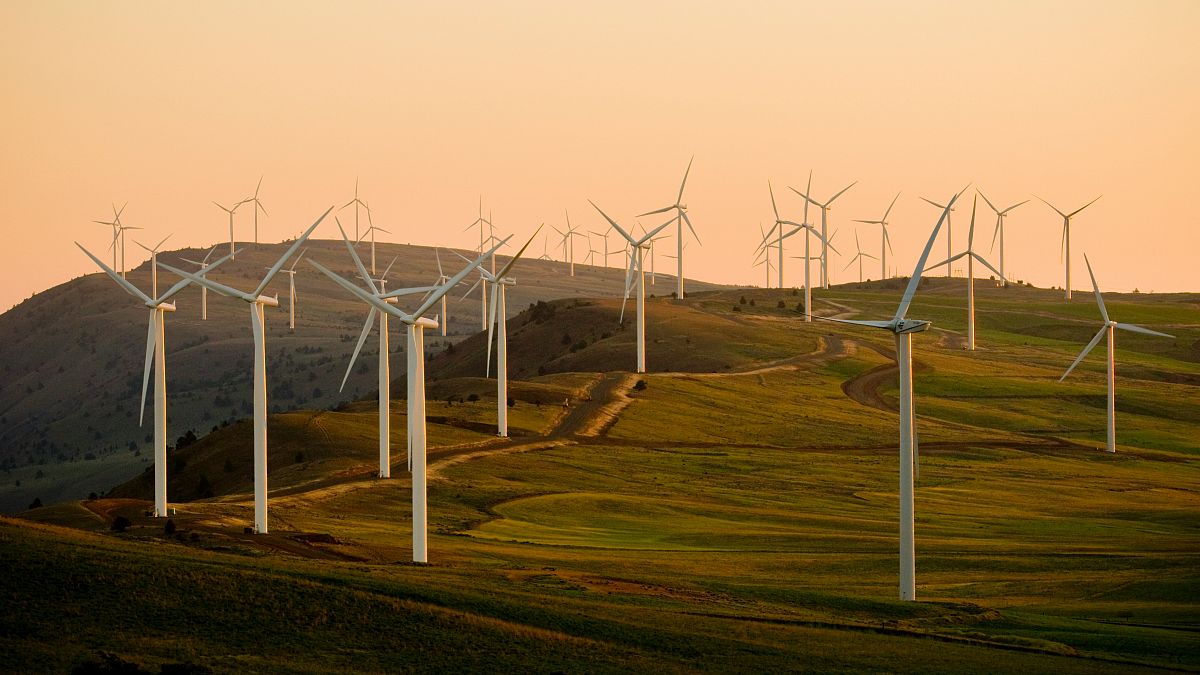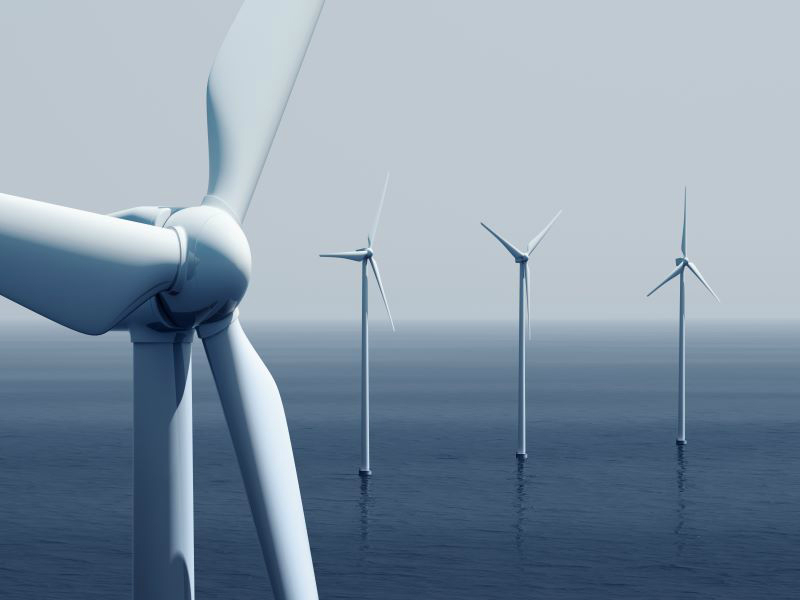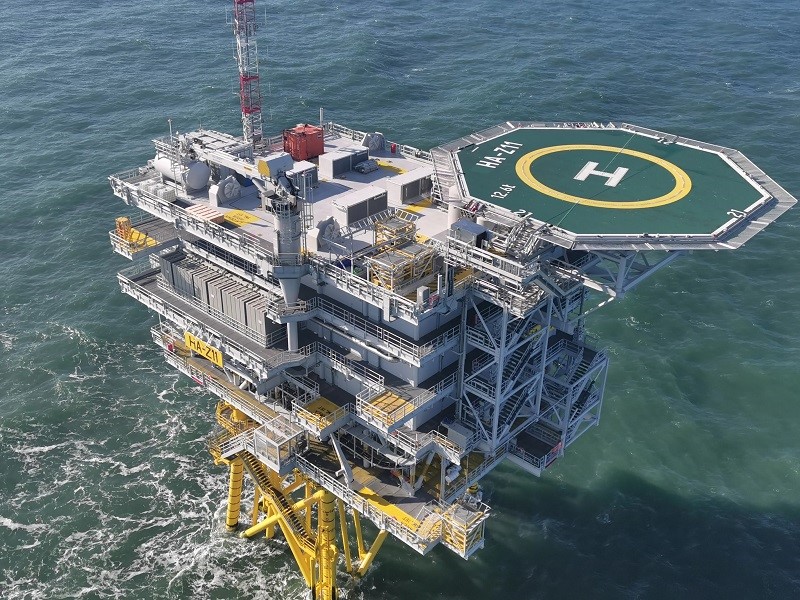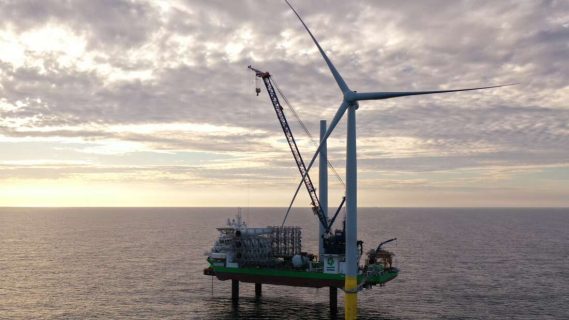Hornsea Wind Farm is a Round 3 wind farm an under-construction in the North Sea, 120 km from the east coast of England. The wind farm started construction in 2018. The first phase was completed in January 2021, with a capacity of 1,218 MW making it one of the largest offshore wind farms in the world. The whole 3-way scheme is set to have a total capacity of around 5.4 GW upon 2027 completion. Hornsea 3 ranks as one of Europes largest offshore wind farms and will deliver almost 3GW of electricity.
The 3 Phases of the Hornsea Wind Farm
The Hornsea scheme has been divided into a number of phases. The 1.2 GW Project 1 received planning consent in 2014, the 1.4 GW Project 2 was later given planning consent in 2016. Also in the same year, the third phase was further split into two phases: Hornsea 3 and 4, having approximate capacities of 3 GW and 1 GW, which increased the capacity of the developed project to around 6 GW.
Hornsea 4 was however discontinued mid this year by
Overview of the Hornsea Wind Farm
The Hornsea site is among three other mega offshore wind farms off the UK’s coast. Hornsea is around halfway between Dogger Bank Wind Farm and East Anglia Wind Farm.
The site has a total area of 4,730 km2 and is 38 km from land at the closest point. Water depth in the zone is from 22 to 73 meters with a tidal range of 2 to 5 meters and average annual wave height of 1.35 to 1.78 meters.
The surface of the seabed primarily contains sands and gravel. Back in 2011, the Danish firm Ørsted, (earlier DONG Energy) acquired the project from SMart Wind.
Later in 2015, Ørsted became the sole owner of the project’s first phase, Hornsea Offshore Wind Project 1. Ørsted acquired rights to the remaining phases of the Hornsea development (2 & 3) by 2015 August. By 2016, Ørsted had come to an agreement with The Crown Estate for the Hornsea 2 and Hornsea 3 phases with amended plans. This is when Hornsea 3 was split into two new projects (4 & 5) and were to be developed in the 2020s. Hornsea 4 was however recently dropped by the developer.
Contracts for Difference Auction & the Hornsea Wind Project
The UK is gearing up to implement one of Europe’s largest wind farms and 131 other renewable energy projects. Wind and six tidal stream projects had also been approved by 2024 through the Contracts for Difference (CfD) auction.
The approval has also been elemental, as it set a record for being one of the most successful renewables auction by the UK government. The CfD is also expected to make a fundamental difference in the nation renewable transition hallmarked by completion of one of Europe’s largest wind farm in 2027. The auction round is also one of the biggest yet, with a significant number of onshore wind, solar, and tidal energy projects. These can power the equivalent of 11 million British homes once commissioned.
Hornsea 3 Project Factsheet
Location: Yorkshire Coast, United Kingdom
Capacity: 2.9 GW
Developer: Ørsted
Cost of Construction: £1.5bn
Project duration: 5 Years
Expected Completion Date: 2027
Significance: The 2nd Largest Offshore Farm in the World; One of Europe’s Largest
State of Affairs Regarding One of Europe’s Largest Wind Farms
Funding procured by the UK government for Europe’s largest wind farms, six tidal streams, projects, and other renewable energy projects is fundamental. The results marked improvement on the previous auction round in 2023, which saw zero offshore wind projects agreed upon.
Furthermore, the government announced in July that the budget for 2024’s renewable energy auction increased by £500m to more than £1.5bn. The record budget helps build new green infrastructure as part of the mission to deliver clean power by 2030.
The CfD scheme allows developers bid for contracts to help deliver renewable energy projects. The scheme then provides a guaranteed price for the clean electricity they generate. This gives the markets greater certainty to invest, knowing that when electricity prices fluctuate, they will always get a set price for their projects.
Auction Significance to Ørsted’s Hornsea 3 Offshore Wind Farm
The CfD auction results boosted the Hornsea 3 offshore wind farm’s progress. With nine contracts awarded, the auction secured funds for the second largest wind farm project in the world.

Energy Secretary Ed Miliband said, “We inherited a broken energy policy, including last year’s [2023’s] disastrous auction round, which gave us no successful offshore wind projects. Today [CfD 2024 auction], we have achieved a record-setting round for enough renewable power for 11 million homes, which is essential to providing energy security to families nationwide. It is another significant step forward in our mission for clean power by 2030. It also brings Britain energy independence and lower bills for good. These results show that together, this government and the energy industry are securing investment into our country.”
Other Projects Approved Under the CfD Auction
2024’s auction saw a significant rise in number of projects. Also in the list was the world’s largest floating offshore wind project to reach market incorporation, Green Volt, which was double the size of Europe’s total installed floating offshore wind capacity.
Additionally, six new tidal projects were given greenlight to build on the UK’s world-leading position, with almost half of the world’s operational tidal stream capacity in UK waters.
Lastly, a combined 115 solar and onshore wind projects are more than the total number of projects delivered in the 2023’s auction round.
Hornsea Wind Farm Timeline

Construction of Onshore Cable Route
In 2016, construction of an onshore cable route began under J. Murphy & Sons. The Hornsea 1 wind farm was planned construction between 2018 and 2019. It now provides an annual production of around 4.1 terawatt-hours (TWh).

In 2018, the new wind park’s first foundation was developed by DEME Group‘s subsidiary GeoSea in January. A subsidiary company of the Belgian DEME Group, Tideway Offshore Solutions installed the export cables. The installation work was completed in December 2018, months ahead of schedule.
In 2019, Hornsea 1 started supplying power to the UK national electricity grid in February with full completion set in the first quarter of 2020. The final monopile foundation was completed in April and by 3 May, 28 turbines out of 174 were installed.
In 2020, construction of Hornsea 2 commenced. The selected area was to the east and north of Hornsea 1, and the turbine specification was set to 165, 8 MW turbines offering a total rated capacity of 1.3 GW.
By April 2021, a third of the turbine foundations at Hornsea 2 were installed and the remaining turbines are set to be fixed in the second half of the year. Upon commissioning in 2022, Hornsea 2 overtook Hornsea 1 to be the largest offshore wind farm in the world. The first turbine was installed by the end of May and on 23 June, Ørsted revealed that the 16th turbine to be installed to the Hornsea 2 array was the 1,000th turbine they had fixed in UK waters, fifteen years since they installed their first.
In October the same year, Ørsted completed the installation of Hornsea 2’s offshore substation and all the 165 wind turbine foundations in the North Sea.
Ørsted as First Customer for SeAH Wind Limited Monopile Foundations

In November 2021, Ørsted revealed a multi-million-pound agreement to become the first and lead customer for SeAH Wind Limited monopile foundations made at the planned UK facility of SeAH Wind Limited. The facility is SeAH Steel Holdings’ (SeAH) subsidiary based in the UK.
On the multi-million-pound agreement, SeAH was to be the main supplier of monopiles for Hornsea 3 offshore wind farm. The agreed monopiles’ production site was a factory at Able Marine Energy Park, on the Humber. The site is capable of manufacturing the extra-large monopiles needed for the new generation of larger wind turbine designs.
SeAH expected to start manufacturing operations in 2023. At the time, the dialogue was ongoing over the final number of monopiles to be provided by SeAH’s new facility to Hornsea 3 wind farm.
Last year’s CfD and the Hornsea 3’s Final Investment Decision (FID) played a significant role in gearing on the manufacturing of monopiles in the UK.
Tackling Climate Change
The Minister for Energy, Clean Growth, and Climate Change, Greg Hands, stated: “Today’s multi-million-pound consensus between Ørsted and SeAH Wind for SeAH Wind Limited monopile foundations is a good example of industry cooperation and a great vote of confidence in the Humber region. The multi-million-pound agreement demonstrates the commitment to tackling climate change and supporting unlock investment in the UK as we grow back greener.”
Hornsea 3 was granted permission in December 2020, and was to be Ørsted’s UK fleet offshore wind farms’ latest version with a capacity of around 2.9 GW. When completed, the scheme is able to provide clean electricity to over two million UK households.
The Head of UK Region at Ørsted, Duncan Clark, stated: “The Hornsea Three team has partnered extensively with SeAH Wind to help their investment decision to develop a new, globally competitive monopile foundations factory across the UK.
Hornsea 2 Wind Farm Officially Starts Producing Power

In late 2021, DEME’s offshore jack-up sea Installer left the Port of Hull loaded with the last batch of turbine components to be installed at the 1.3 GW Hornsea 2 wind farm.
The sea installer together with its sister vessel, Sea Challenger, transported the wind farm’s 165 Siemens Gamesa 8.4 MW turbines from Siemens Gamesa’s facilities in Hull and installed them at the project.
Days before Christmas 2021, power was already being generated from Hornsea 2 wind farm. At this point it was the world’s largest offshore wind farm. Hornsea 2 has 165 Siemens Gamesa wind turbines, each with a peak capacity of 8 MW.
Becoming the World’s Largest Offshore Wind Farm
With a capacity of 1,320 MW (equivalent to 1.3 million typical UK homes), Hornsea 2 overtook the neighboring Hornsea 1 to become the world’s largest offshore wind farm. Hornsea 1 comprised smaller but more numerous turbines, with a capacity totaling 1,218 MW. The title sits with Dogger Bank Wind Farm as of 2025.

Leave a Reply